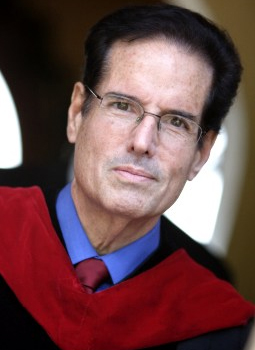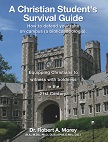A Brief History of Reincarnation
By Dr. Robert A. Morey
The present popular Western concepts of reincarnation are actually refinements of the ancient theory of transmigration. This theory states that all human “souls” are involved in a cyclic series of rebirths in which the soul is eventually purged of evil by suffering, administered through the Law of Karma.
In the Indian Vedas, the word “Karma” originally meant “a sacrifice” or “a ritual act.” In the Upanishads it evolved into the concept that any act in this life will have an effect on one’s next life. Finally, in the Bhagavad Gita, Karma is viewed as a punishment in this life for evils done in the past life, with a prospect of purification for future lives.1
According to the Law of Karma, one’s soul can be reborn into an insect, animal, or human body. For example, a gluttonous man could be reborn into a pig’s body as punishment.
The Law of Karma is the immutable law that a person pays for evil he does in this life by suffering for it in the next life. If he is reborn as a worm or as a blind girl, this is his Karma. No one can pay his Karmic debt for him. All the suffering he experiences in this life is his own fault.2 The Law of Karma will always catch up with him. There is no escape.
A person’s soul, according to this doctrine, is eternal and is part of the “world soul” or “ultimate being” (sometimes called “God”). A person emanates out of this “cosmic energy” and passes through multiple cycles of rebirths until he is finally absorbed back into unconscious reality. One is “fallen” now because he is under the illusion of self-consciousness (I-am) and of subject-object relationships to the world (I-Thou and I-it). Through cyclic rebirths he will return to an impersonal nonconscious fusion with “ultimate reality.” In other words, the person was nothing, is now in trouble because he thinks he is something, but will return to being nothingthrough Karmic cyclic rebirth.
The theory of transmigration was disseminated into the Western world in the form of Orphic mysticism.3 Many Western pre-Socratic, and later Greek philosophers, held to Karmic transmigration in one form or the other. It became a firm Western as well as Eastern philosophic tenet.
With Eastern and Western philosophers embracing the theory of Karmic transmigration, it is remarkable that Judaism held to its revealed dogmas. Its doctrines of God, creation, sin, man, death, and salvation were contrary to the popular Eastern and Western philosophies. It is no wonder, therefore, that Judaism expended its main energy on survival and thus did not significantly influence the philosophic world.
In the world in which Christianity arose, most of the first-century Greek mystery religions, such as Gnosticism, held to various theories of Karmic transmigration. Christianity eventually displaced Karmic transmigration with its doctrine of Christ’s substitutionary atonement in which He paid all of our “Karmic debt” through His own suffering. He had no Karma of His own, but He suffered and died for our sins.4
In the late 1800s, secularism, liberalism, and humanism began to displace Christianity through a rationalistic denial of supernaturalism. As Christianity was stripped of the miraculous and the supernatural, a spiritual vacuum was created in the hearts of many people. A revival of the occult religions, such as spiritism, thus ensued. Because secularization had stripped Christianity of its supernatural character, people began to return to the old forms of paganism.
Occult practices and theories grew because they satisfied the desire for the miraculous and the supernatural. Thus, witchcraft, astrology and spiritism began to gain acceptance.5 The early part of the 20th century also witnessed a growth of occult groups which espoused reincarnation.
At present, many secularized “Christians” are gradually moving into the world of the occult. Since liberalism and neoorthodoxy have fostered the secularization of Christianity in the mainline Protestant denominations, more nominal Christians will be drawn into the occult. Liberal theology creates the vacuum which the occult fills.
The theory of Karmic transmigration has been modified to suit the Western Christian mentality. Since a “Christian” would not accept rebirth into a bug or animal, the concept was redefined so that rebirth always took place in a human body.6 This westernized form of transmigration was first expounded by occult groups such as Theosophy, and later by many of the Indian Hindu gurus who came to the United States. It was eventually adopted by such psychics as Jeane Dixon and Edgar Cayce.
Cayce, sometimes called “the sleeping prophet” because he gave his medical readings and prophecies while in a sleeplike trance, has done much to popularize this Western view of reincarnation. Cayce claimed to be a “Christian” who believed in reincarnation; but occult practices blended hand-in-glove with his reincarnation beliefs. He also accepted the basic metaphysical beliefs which formed the philosophic basis of reincarnation. Thus he was “Christian” in name but Hindu in belief.
The Western version of transmigration is, therefore, a “hybrid” of distinctly opposite religious philosophies, borrowing just enough of Christian doctrine to make it palatable to western minds. Because transmigrational thought infiltrated our society so gradually, few have noted what an inconsistent mixture it really is.
This is an excerpt of Reincarnation and Christianity by Robert Morey






































